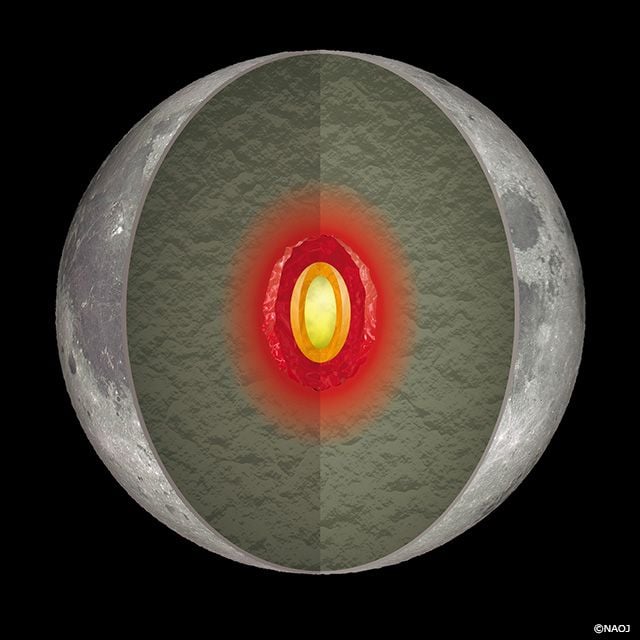Earth Is Making the Moon All Warm and Soft on the Inside
A new model boosts the notion that a layer of rock near the moon’s core is squishy and perhaps partially melted
:focal(2082x775:2083x776)/https://tf-cmsv2-smithsonianmag-media.s3.amazonaws.com/filer/56/54/5654cbc5-989d-4a2d-899d-87b1e36ff6f5/6419128151_ed190ff8db_o.jpg)
Deep down, the moon is an old softie. Comparing computer models to data from lunar probes, scientists in China and Japan argue that a layer of rock near the moon’s core is especially soft and perhaps partially melted, and Earth is most likely the cause.
Our best theory of lunar origins says that a baby planet about the size of Mars slammed into Earth about 4.4 billion years ago. Debris from this planetary smashup coalesced to form the moon. While Earth is still warmed in part by residual heat from its magma-ball origins, the much smaller moon should have cooled off fairly quickly, becoming a cold, hard orb all the way down to its core.
But since the days of the Apollo program, probes of the moon’s insides have offered hints that it has managed to keep warm and soft for longer than should have been possible. Some recordings of events called “moonquakes” suggested that seismic waves were passing through a layer of molten rock somewhere inside the moon. Other moonquake recordings didn’t show this molten layer, though, creating a bit of a mystery. The trouble is that it’s hard enough for scientists to decode what’s going on deep inside Earth, much less in the depths of the far-away moon. So scientists have had to work with any tools they can get, including the Apollo-era seismic recorders.
“These experiments were not optimized to study the deep interior, and researchers are commended in doing as well as they have in teasing out information on deep structure,” says Maria Zuber, a geophysicist and lunar expert at the Massachusetts Institute of Technology, who was not involved in the latest paper.
Further signs of warmth in the moon’s mantle have come from ranging experiments, which fire lasers at the moon to see how long it takes for light to bounce off reflectors placed there during moon missions. This technique allows scientists to develop theories about the moon’s inner structure by looking at subtle changes in its shape and rotation rate over time.
Until now, though, no model of the moon’s insides has been a good match for the available data. So Yuji Harada at the China University of Geosciences in Wuhan and his colleagues crunched the numbers and developed a new model that includes a discrete squishy region where the moon’s mantle meets its core. The team describes the results in a July paper in the journal Nature Geoscience.

“What they show is that their model can explain the data if a molten layer above the core-mantle boundary exists and if it has a low viscosity,” says Zuber. She points out that, based on the team’s viscosity estimates, most of the rock in this soft layer is not runny magma, like the stuff that oozes out of Earth’s volcanoes. “While the authors call this value ‘low’, and it is in a geological sense, it is about 18 orders of magnitude stiffer than water,” she says.
Harada and his colleagues suspect that the push and pull of our planet’s gravity is kneading the deepest part of the mantle like a lump of stiff putty, creating heat that is insulating the core and keeping it toasty too. “The low-viscosity layer plays a role as a blanket for the cooling of the core,” the team writes in their paper.
The results not only help us peer inside the modern moon, they should allow scientists to trace lunar evolution since its birth and better understand the ways Earth has influenced its partner over time.
And according to Zuber, the research even adds to evidence that the lunar orb is saturated with more water than imagined. “It's a bit of a puzzle how the moon stayed warm that deep for so long,” Zuber says. The presence of water—in the form of hydrated minerals—would lower the melting point of lunar rocks, helping the center stay soft.